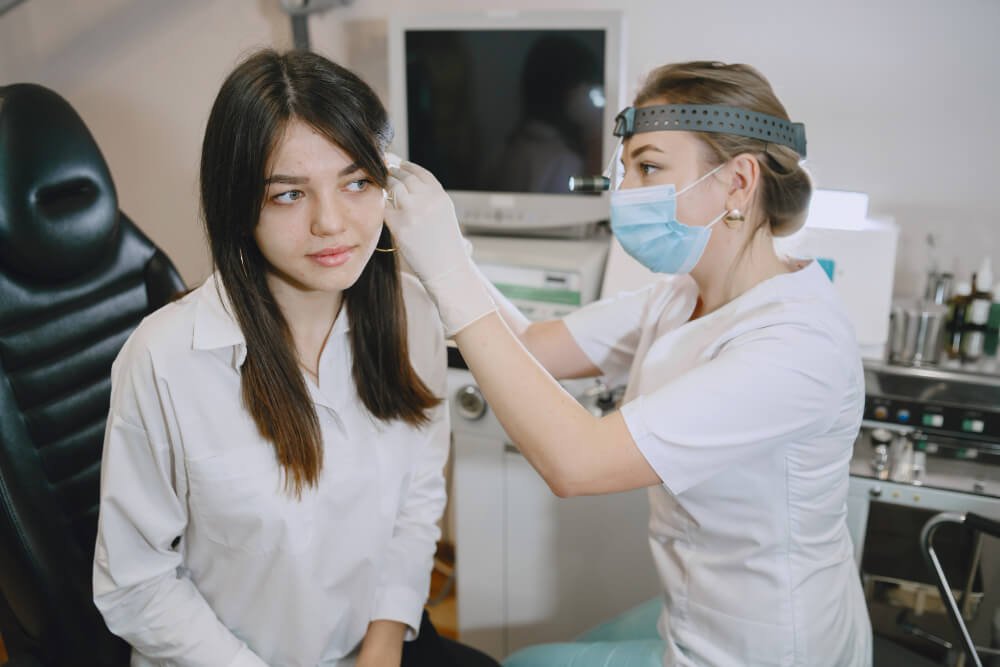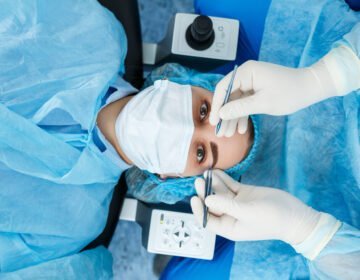
All About Otoplasty (Cosmetic Ear Surgery)
Otoplasty is a type of plastic surgery involving the ear. During Otoplasty, a plastic surgeon can adjust your ears’ size, position, or shape. Some people choose to have lift surgery to correct a structural abnormality. Others have it because their ears stick out too far from the head and don’t like it.
Read on to learn more about otoplasty, who usually does it, and what the process looks like.
What is otoplasty?
Ear reconstruction is sometimes called cosmetic ear surgery. It is performed on the visible part of the outer ear, called the atrium.
The margin consists of folds of cartilage covered with skin. It begins to develop before birth and continues to grow in the years after you are born.
If your eustachian tube is not developing typically, you may choose to have otoplasty to correct your ear’s size, position, or shape.
There are several types of Otoplasty :
Ear lifts
Some people may have small or incomplete ears. In these cases, they may want otoplasty to increase the size of the outer ear.
Ear pins
This type of Otoplasty involves bringing the ear closer to the head. It is performed on people whose ears protrude from the sides of the head.
Ear reduction
Macrotia is when your ears are more prominent than usual. People with macrotia may choose to have otoplasty for reducing the size of their ears.
Who is a good candidate for otoplasty?
Rhinoplasty is commonly used for these ears:
- protruding from the head
- larger or smaller than normal
- abnormally shaped due to trauma, trauma or structural problems since birth
In addition, Some people may have had ear enlargement and are not satisfied with the results. For this reason, they may choose to have another procedure.
Good candidates for otoplasty include people who:
Five years of age or older. This is when the atria have reached 90% of their adult size.
Good general health. Having an underlying medical condition can increase the risk of complications or interfere with the healing process.
Non-smokers. Smoking can be the reason to reduce blood flow to the area, slowing the healing process.
How does the procedure work?
See precisely what you can expect before, during, and after labour.
Before: Consultation
Always choose a board-certified plastic surgeon for a rhinoplasty. Likewise, the American Society of Plastic Surgeons has a handy search tool to help you find board-certified plastic surgeons in your area.
Before your intervention, you will need to have a consultation with your plastic surgeon. During this time, the following will happen:
- Review medical history. Ask about the medications you’re taking, previous surgeries, and any current or past medical conditions.
- Check. Your plastic surgeon will measure the shape, size, and position of your ears. They can also take measurements or photos.
- Discussion. This includes talking about the procedure itself, the risks involved, and the potential costs. Your plastic surgeon will also want to know your expectations about the procedure.
- Questions. Ask questions if something isn’t precise or if you need more information. Ask about your surgeon’s qualifications and years of experience.
During: Procedure
Otoplasty is usually an outpatient procedure. This process can be longer, from 1 to 3 hours, depending on the specifics and complexity of the process.
Adults and older children may be given local anaesthesia with sedation during surgery. In some cases, general anaesthesia may be used. Furthermore, general anaesthesia is often recommended for young children undergoing dilation.
The specific surgical technique used will depend on the type of rhinoplasty you have. In general, otoplasty includes:
- Make an incision, either behind your ear or inside the folds of your ear.
- Manipulation of ear tissue includes Removing cartilage or skin, Folding and shaping the cartilage with permanent stitches., Grafting cartilage into the ear.
- Close the incision with stitches.
After: Recovery
After completing the procedure, you will have a bandage on your ear. Make sure to keep the dressing clean and dry. Also, try to do the following during your recovery:
- Avoid touching or scratching your ears.
- Choose a sleeping position where you don’t have pressure on your ears.
- Wear clothing that doesn’t need to be pulled over your head, such as a button-down shirt.
You may also need to deduct points in some cases. Your doctor will let you know if this is necessary. Some types of sutures are self-dissolving.
Common side effects after surgery
Common side effects during recovery include:
- painful, tender, or itchy ears
- redness
- swelling
- bruising
- numbness or tingling
Your bandages will hold for about a week. Once removed, you will need to wear the elastic headband for another 4-6 weeks. You can wear this at night time. Your doctor will let you know when you can resume various activities.
What are the risks or precautions to be aware of?
Like other surgical procedures, Otoplasty has certain risks. These may include:
adverse reactions to anaesthesia
- bleeding
- infections
- ears that are asymmetrical or unnatural looking contour
- scarring at or around the incision site
- changes in skin sensation, usual extrusion of temporary
- sutures, where the stitches that fix your ear shape touch the surface of the skin and must be removed and reattached
Does insurance cover rhinoplasty?
According to the American Society of Plastic Surgeons, the average cost of a rhinoplasty is $3,156. Prices may be different depending on factors such as your plastic surgeon, your location, and the type of procedure used.
In addition to the costs of the proceedings, there may also be other costs. These may include the cost of anaesthesia, prescription drugs, and the type of facility you use.
Rhinoplasty is not usually covered by insurance because it is generally considered cosmetic. This means you may have to pay some fees yourself. Likewise, some plastic surgeons may offer payment plans to help cover the costs. You can learn more about this during your first consultation.
In some cases, insurance may cover a rhinoplasty to help alleviate a health problem.
Be sure to discuss your insurance with your insurance company before surgery.
Conclusion
Otoplasty is plastic surgery of the ears. It is used to adjust the size, shape or position of your ears. People get otoplasty for many reasons. These may include ears that are protruding, larger or smaller than usual, or irregularly shaped.
There are different types of otoplasty. The type used and the specific technique will depend on your needs. Recovery usually takes several weeks. If you’re considering dermal blepharoplasty, find a board-certified plastic surgeon in your area. Likewise, try to focus on providers that have years of experience performing lifts and high satisfaction rates.
















